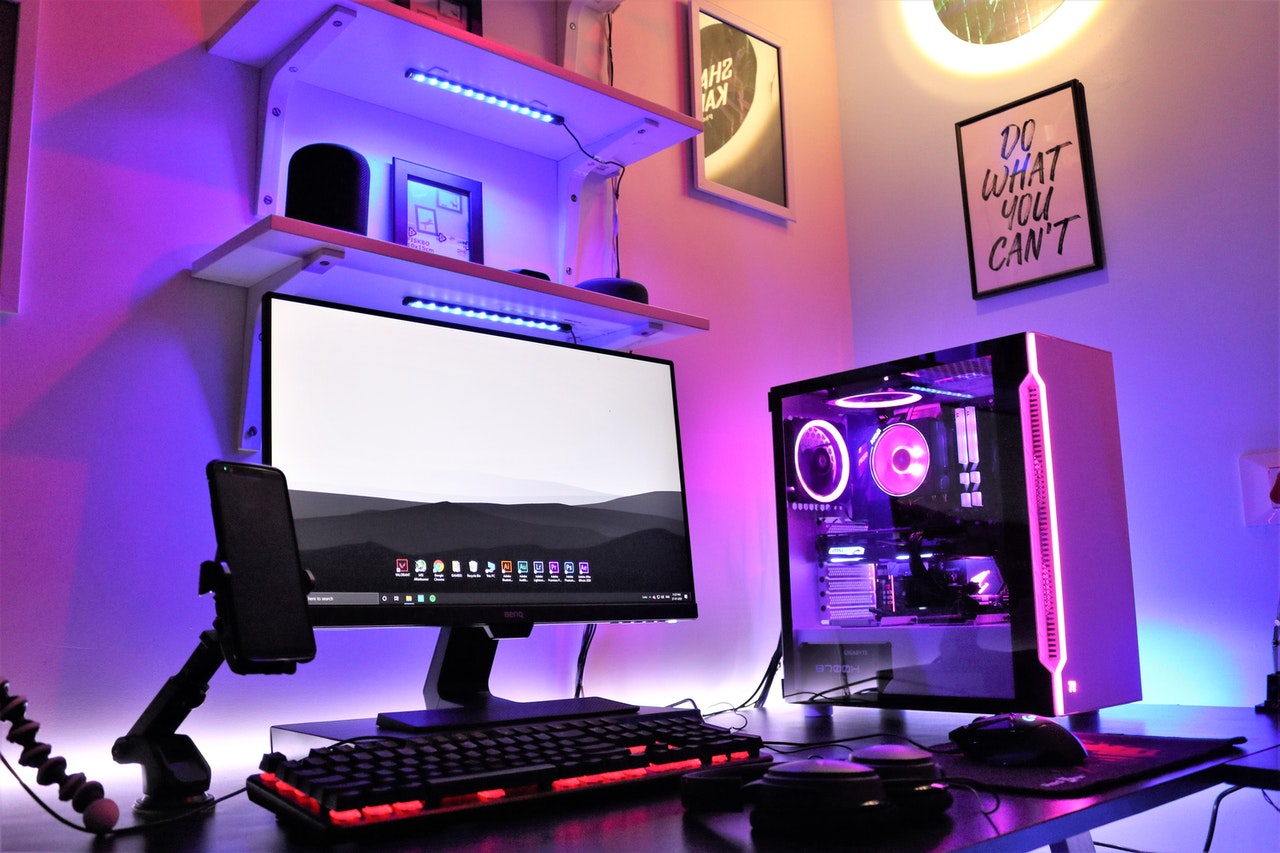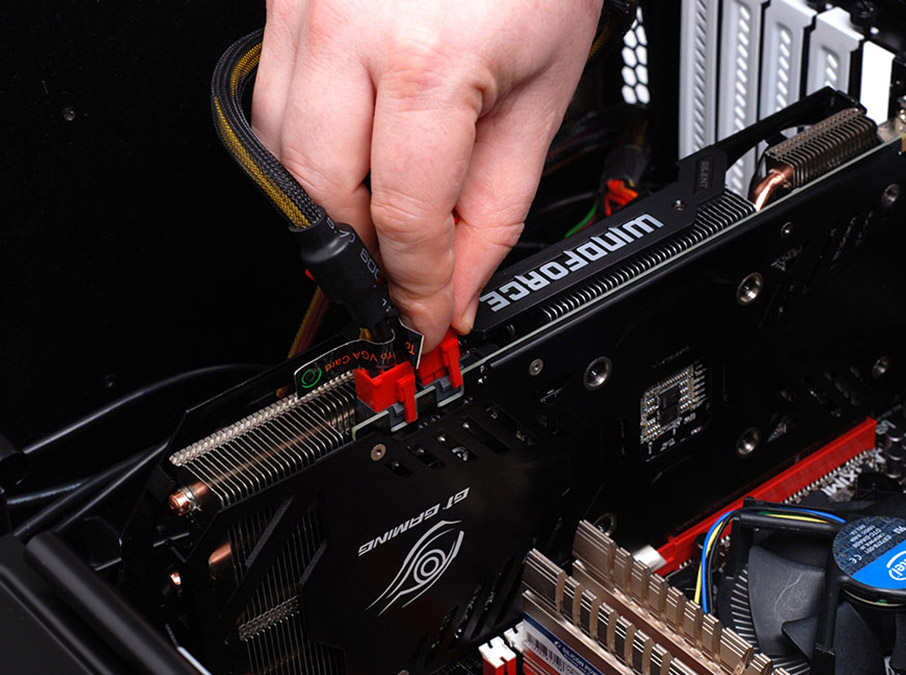
The latest games are best played at their full resolution and graphics. And if you want to experience the best gameplay possible, then the best thing you can do is upgrade your desktop’s graphics card. Although it is easy to install a graphics card, the hard part comes when choosing the best graphics card for your gaming PC.
But fret not — below is a complete guide on how to upgrade a graphics card in your gaming PC:
Choosing and Installing a New Graphics Card

Step 1 – Check your unit’s compatibility.
Before buying a new graphics card, you need to know what type of graphics cards are compatible with your gaming PC. Today, most graphics cards are PCI-Express standard, so users can easily plug them into their unit’s motherboard. These graphics cards usually require a PCI-E slot x16, so check your motherboard if you have a full-sized slot. If your motherboard only has an x8 slot, that can work too. However, any slot lower than 8 won’t do.
Step 2 – Make sure that your graphics card will fit.
Full-size tower cases are compatible even with the biggest graphics cards. But if you’re using a smaller case unit, you have to check whether your graphics card will fit. So make sure to check the card slot’s width and length. High-powered graphic cards are usually wide enough to take up two slots. But if you’re already using another type of card in one of the slots, you need to check the space limitation.
When it comes to the card’s length, most powerful graphics cards are longer, while low-end and mid-tier cards are shorter and can fit in most cases. To make sure it does, open up your case and measure your available space.
Step 3 – Consider your PC’s Power Supply.
Your unit’s power supply is another thing to consider when buying a new graphics card. Mid to high-end cards need a dedicated electrical connection to your unit’s power supply to work. The plug is usually located at the top or on the end of the card. In most cases, a 600-watt power supply will be sufficient. But do check the power consumption of your graphics card. Have at least an available margin of 30 to 40 watts for your new graphics card.
Step 4 – Check your graphics card interface.
Another thing you should check is how you can connect your monitor to your new graphics card. New graphics cards can be connected via DisplayPort, HDMI, and DVI connection. If you happen to use a monitor that doesn’t have any of those ports, you can buy an adapter cable.
Step 5 – Set a budget.
There are hundreds of graphics cards in the market with competitive prices. While you might want to buy the newest graphics card, you also need to consider your budget and what graphics card will work perfectly on your gaming pc. To give you a range of costs, graphics cards that cost around $250 to $300 can handle the new games — and works well with 60 frames per second. But if you want a more powerful graphics card, you might want to set a budget of around $500 to $600.
High-tier graphics cards are worth $800 or more and will work wonders on monitors with 4K resolutions. There are also affordable video graphics cards at $130 to $180. However, you need to compromise some of your settings when playing high-end games.
Step 6 – Consider your gameplay.
Are you buying a new graphics card to play VR games on your gaming PC? If yes, VR headsets such as Oculus Rift and HTC Vive require a powerful graphics card as they simultaneously render two video streams. Thus, these headsets require a GTX 970 graphics card or greater.
Step 7 – Choose your brand of the graphics card.
The two best graphics card manufacturers in the industry are NVIDIA and AMD. Both manufacturers offer designs at various prices and compete well. However, they have frame-syncing technologies that are not compatible with each other. AMD Radeon uses FreeSync while NVIDIA GeForce uses G-Sync. So if your monitor uses FreeSync, you should buy AMD Radeon, while if your monitor uses G-Sync, you need to use NVIDIA GeForce.
Step 8 – Check the warranty.
Almost all retailers offer return policies and warranties to buyers. So if you accidentally bought the wrong graphics card online, you can usually return it as long as you have the receipt. But these rules don’t usually apply if you purchased your graphics card from secondary markets such as Craigslist or eBay. It is recommended to buy your graphics card from a trusted retailer to avoid inconvenience.
Step 9 – Remove your old GPU.
Once you have purchased your graphics card, here are the steps you need to do to uninstall your old GPU:
- Unplug the cable that connects your graphics card to your power supply. Set the cable aside.
- Check the metal piece where the graphics card connects at the back of your PC. There will be one or two screws that secure the video card slots in place. Remove the screws and set them aside.
- Find the little plastic tab which holds the slot on your unit’s motherboard. Reach under the tab and push it to release the old graphics card. If that didn’t work, press the tab down instead.
- Carefully pull the card out and set it aside.
- Once you’re done, you can now install your new graphics card.
Step 10 – Install your new graphics card.
These are the steps you need to follow to install your new graphics card on your gaming PC:
- Remove the graphics card from its package.
- Gently slide your graphics card into the PCI-E slot. Make sure that it is aligned with the metal piece that is connected to the case. Push down gently until you hear a little pop from the plastic tab at the end of the PCI-E slot.
- Check if the graphics card is locked in place.
- Use the screws you set aside earlier and secure the graphics card to the metal piece at the back of your PC case.
- Then connect the power cable if your graphics card requires one.
- Double-check the connections and screws if they are firmly in place. Replace the side panel of your PC case or cover. Then plug in the PC and turn it on.
- Once your PC starts, install the graphics card drivers. You can download them directly on their respective websites.